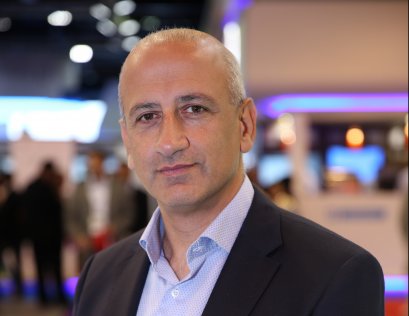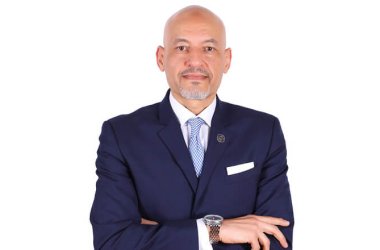With great change comes great opportunity. That’s the view of Fadi Moubarak, Vice President, Channels, Avaya International, anyway. In this exclusive interview, Moubarak explains to Anita Joseph, Editor at Reseller Middle East, how the past 18 months have unearthed huge transformation opportunities in the channel, and how Avaya is helping its partners to harness that opportunity.

“When you’re finished changing, you’re finished.”
These words by Benjamin Franklin, recorded around 350 years ago, are today more relevant than the US founding father could ever have imagined. The pandemic accelerated seismic shifts in the IT industry that were already happening, and today it’s the businesses that moved quickly with the times that are faring best.
Small wonder, then, that Avaya is encouraging its partners to “subscribe to change” to reap the rewards of the new world emerging in front of us. According to Fadi Moubarak, Vice President – Channels, Avaya International, the changes we’re seeing in the market – particularly in regards to the experiences that customers and employees now demand – represent a huge opportunity for Avaya and its partners. And he wants the company’s partner community to be ready to embrace that opportunity.
To find out how Avaya is going to support its partners as they ‘subscribe to change’ – the theme for the upcoming Avaya Partner Forum, taking place both live and online via Avaya Spaces – we sat down with Moubarak for an in-depth look at where the market is heading.
The regional market as a whole has been witnessing major changes and shifts across every industry. Some are struggling, others are doing well. What’s your take on the market now, and what are the opportunities in the channel?
The market remains relatively volatile compared to what we were seeing before the pandemic – both at a regional level and a global one. As you’d expect, that volatility presents its own challenges, which our partners and customers are continuing to deal with. But, crucially, it presents a lot of opportunities, too.
Indeed, the very fact that most organisations are gearing themselves up to be agile enough to address the unknown is creating an opportunity. We’ve seen the importance of business continuity over the past 18 months, and the businesses that are now back into their cycles of growth are investing heavily to make sure they aren’t stung by unforeseen circumstances again. That’s an opportunity for Avaya and its partners – both in the customer experience and employee experience space. We could be talking about increased spend on workstream collaboration to re-align to a work-from-anywhere culture, or the roll-out of AI to lessen the load on stretched contact centre agents.
These are short-term wins that are partners have been helping our joint customers with. Beyond the pandemic, though, the long-term opportunities are vast. And that’s because organisations have realised that improving the quality of experiences through both the customer and employee journey is today among the most important differentiators and creators of brand affinity. And that’s where Avaya and its partners excel – creating experiences that matter for our customers’ customers.
Avaya has been constantly innovating on its solutions portfolio. So what are the latest updates and how can partners benefit?
We know that organisations are paying more attention than ever on the customer and employee experience. But with the demands of these groups constantly changing, it’s become almost impossible to keep up using legacy technologies. The experiences that people demand just can’t be satisfied with monolithic, glass-ceiling apps in a cloud world; experiences must be ‘composed’, and that’s what our innovation is focused on.
With the assumption of cloud as a given, experiences can be composed as and when they’re required – with deployment times of hours, rather than months. And with Avaya OneCloud, we’re enabling our customers to create the unique experiences they need—in the moment.
This doesn’t mean embracing public cloud across the board, or having to rip and replace an entire technology stack. It can be a hybrid architecture, extending what you already have, using something out-of-the-box, or a customised, new solution that meets your specific needs. The outcome is what’s important, and the outcome is being able to compose what you need right away.
So you’ll see our key investments in using cloud to make it easier to roll out new services. And we have proof-points on that: For instance, with Avaya Spaces, we were able to leverage NVIDIA’s cloud platform to quickly roll out AI-powered noise cancellation and immersive presenter features. That’s composability in action.
And you see the same thing in the contact center space. We’re helping our customers roll-out voice biometrics, or natural language voice bots, by composing solutions using our platforms and technologies from our technology ecosystem partners for that innovation.
In this world of fast-moving innovation and on-the-fly composition, the role of the partner is of course changing. There’s less of a focus on installing and implementing, and more on helping the customer to consume and compose with the technology in the most appropriate manner. So our partners are upskilling when it comes to customisation, integrating multi-cloud infrastructures, and taking advantage of a vast technology ecosystem.
And those efforts are reaping great rewards: The end customers who cannot compose solutions on the fly will have a very difficult time competing in the experience economy. The opportunity, therefore, is in enabling our joint customers to not only compete, but to win in that economy.
Tell us about your Edge partner program and how it’s evolving to meet the new demands of the partner community.
The Avaya Edge program is the vehicle through which our partners can really harness this opportunity, and like the technology, it’s going through an evolution. With the growing number of our customers demanding cloud models, we recognise the importance of getting our partners business-ready to address those demands.
So the Edge program is shifting its focus to deliver greater rewards for partners consuming cloud-based applications. And it rewards partners even further for winning cloud-based deals with new, rather than existing, customers.
That’s just a small example of how we’re fine-tuning our program to enable our partners to help customers use Avaya OneCloud to compose the solutions they need to address changing demands. In other areas, we’ve reduced the need to invest in traditional certifications, which are no longer relevant in the cloud space, while we’ve encouraged new types of certifications that partners should go in for.
We’re also encouraging partners a lot to invest in verticalisation – to take those OneCloud solutions and create their own wrap on them for their specific industry. For example, one of our partners has composed a branded version of Avaya Spaces to enable virtual real estate consultations. It’s great use case that shows an understanding of the customer, the business and the market, and how to address those requirements with our solutions.
The Avaya Partner Forum is taking place in November. How is it going to reflect the challenges we’ve been speaking about, and the new world of work?
Of course, hosting an event during this time we call the ‘new normal’, we’re organising something that’s hybrid. It’s about meeting the wide-ranging demands of our partner community: No matter how many people are able to attend in person, there are always going to be those who can’t make it.
So our event is face-to-face and we’re very excited about welcoming those who can travel in-person, but we’re also broadcasting live around the world for those who aren’t able to. The agenda has been designed to take both setups into consideration, with shorter, web-friendly sessions taking place at appropriate times for an international audience.
In terms of the content of the event, we’ll be addressing the trends and challenges we mentioned earlier – and the huge opportunities there are in delivering experiences that matter. The pandemic showed us there is no one-size fits all model for the new ways of delivering experiences, and organisations now realise that their customers and employees expect personalised, immersive experiences, wherever they are, and however they’re choosing to interact. Avaya OneCloud is the best way to deliver these experiences, and we’ll be showing our partners just how powerful the platform can be when it comes to addressing their customers’ demands.
What’s your outlook for the channel, now that 2021 is over and 2022 is coming up?
This is an incredibly exciting time for Avaya and its partner community. We were able to help our customers address the challenges of the pandemic, and with a renewed focus on providing unforgettable experiences, our customers are turning to us for their post-pandemic plans, too. The world is returning to a new type of normal, and we have this amazing opportunity to put our platforms right at the center of that new normal.
The pandemic accelerated customer and employee demands for better experiences, particularly on the digital front, and now there’s a huge transformation agenda taking place to address that. You have governments setting out their visions for a post-pandemic world focusing on better citizen experiences, and the private sector is following suit.
Our opportunity is to provide the platforms that are flexible enough to accommodate these changes. Many organisations with inflexible applications have struggled to respond as quickly as necessary to the new demands that have been placed on them over the last 18 months. Consumers and employees have grown accustomed to contactless and self-service, as well as virtual engagement. Today, only the companies that can meet these demands will thrive.
What’s exciting is that we have the platform to address this in Avaya OneCloud, with which we’re providing the flexibility and speed to value that organisations need to succeed in this new world. It’s helping organisations realise the power and potential of an API-based model and create the composable enterprise, with features that can be composed in minutes with modular capabilities. It also provides the AI capabilities that can offer human-like, automated support that speeds responsiveness. And it delivers evolved workstream collaboration that supports the composable enterprise while enabling organisations to move at the speed of their customers and employees.
We’ll see all of these trends really accelerate in 2022, and we can’t wait to see what we can achieve with our partners as we address them.
Finally, what’s your advice to the partner community?
In the pre-pandemic world, partners were an extension of the vendor. In the cloud world, this has been reversed; our partners are an extension of the customer. So I’d stress that our partners should understand the customer and their requirements before anything else. The beauty of a composable platform like Avaya OneCloud is that it’s easy to build the solutions once you understand the requirements.
Our message to our partners is that you’re an extension of the customer, so help us understand the customer requirements needs, challenges and opportunities. The better we both understand them, the better we’ll be able to serve them. Nothing beats a happy customer.





